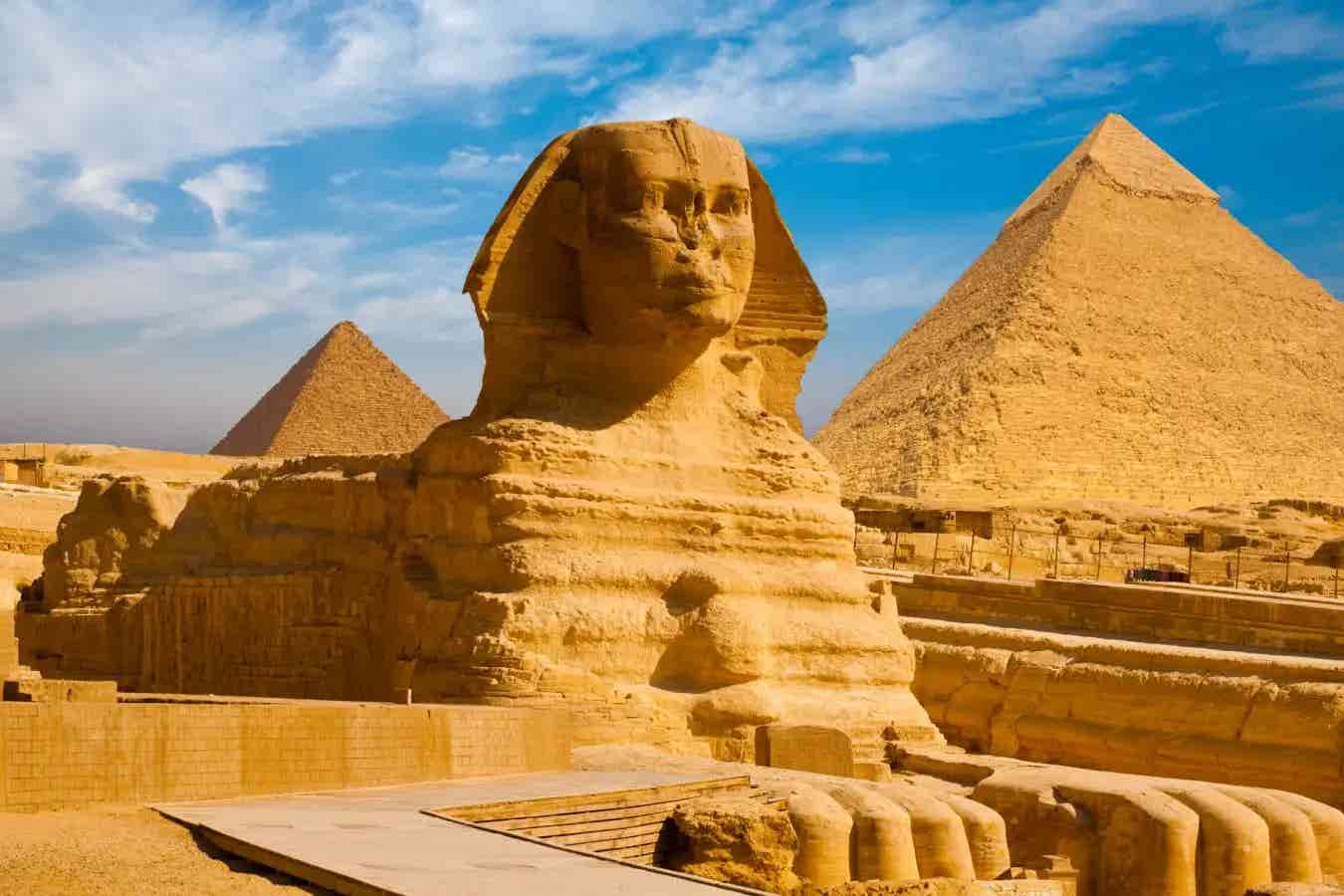Scientists unlock the secrets of the Great Sphinx of Giza
Carved from limestone and towering beside the pyramids, the Great Sphynx of Giza remains a powerful symbol of ancient ingenuity.

The Great Sphinx of Giza, an emblem of ancient mysticism and architectural grandeur, has stood guard over the Giza plateau for millennia. (CREDIT: CC BY-SA 3.0)
The Great Sphinx of Giza has stood guard over the desert for thousands of years. Carved from limestone and towering beside the pyramids, it remains a powerful symbol of ancient ingenuity. With its serene gaze and monumental scale, it continues to stir debate and awe in equal measure.
Throughout history, sphinx-like figures have appeared in many cultures. But none have left a mark quite like the one in Egypt. Here, the Sphinx represents strength, wisdom, and divine protection—a guardian carved in stone.
Shaped with the body of a lion and the head of a ruler, the Great Sphinx is thought to reflect the might of a pharaoh. Scholars link it to the sun god Ra, suggesting a blend of human insight and animal strength. Its design may have been a message to the heavens—and a warning to foes.
Elsewhere, the Sphinx takes a more sinister form. In Greek stories, it becomes a beast that tests wanderers with riddles. Those who fail pay with their lives. This version represents the edge of the unknown—where knowledge meets danger.
Despite centuries of study, many secrets still lie beneath the surface. One big mystery: what did the landscape look like when workers first carved the Sphinx? Could the shape of the land have guided its design?
A new study led by scientists from New York University takes a fresh look. These researchers are digging into the environmental forces that shaped the site 4,500 years ago. Their aim is to understand not just what humans built—but what nature offered.
Associate Professor Leif Ristroph of NYU’s Courant Institute leads this effort. His team has turned to fluid dynamics to explore how wind and weather may have sculpted the Sphinx before, during, and after its creation.
Their research, set to appear in Physical Review Fluids, reimagines erosion not as a threat, but as a co-artist. By blending physics with archaeology, the team opens a new chapter in how we understand this timeless monument.
Related Stories
"Our findings offer a possible ‘origin story’ for how Sphinx-like formations can come about from erosion," Ristroph shares with a sense of discovery. "Our laboratory experiments showed that surprisingly Sphinx-like shapes can, in fact, come from materials being eroded by fast flows."
The cornerstone of their research is the replication of yardangs – peculiar desert rock structures sculpted by relentless winds. These natural phenomena provide a clue to the potential beginnings of the Great Sphinx, hypothesizing it as an ancient yardang that human hands later refined into the majestic form we recognize today.
To recreate these conditions, Ristroph and his team at the NYU’s Applied Mathematics Laboratory delved into a series of sophisticated experiments. They crafted mounds from soft clay with embedded harder materials, emulating the geological makeup of northeastern Egypt, the Sphinx’s home.
Through their efforts, they unleashed a torrent of fast-flowing water, an analog to the wind that etched the desert’s face, to observe how it might carve similar structures.
As the artificial elements took their toll on the clay mounds, a lab-created Sphinx emerged. The resistant materials within the clay refused to yield, forming what would become the 'head' of the lion, while softer areas around it were gradually worn away to reveal a pronounced 'neck,' the stretch of 'paws,' and the curve of an 'arched back.'
The experiment's striking result was an echo of the Sphinx, chiseled not by human hands but by the fluid mechanics of erosion. The image accompanying this research, encapsulates this journey from formless clay to a figure that mirrors the ancient guardian of Egypt.
"Our results provide a simple origin theory for how Sphinx-like formations can come about from erosion," Ristroph notes, emphasizing the broader implications of the study. Indeed, yardangs that bear a resemblance to seated or reclining animals exist today, bolstering the credibility of the team's findings.
This research not only pierces the veil of history but also offers a wealth of knowledge to geologists. Ristroph points out, "The work may also be useful to geologists as it reveals factors that affect rock formations—namely, that they are not homogeneous or uniform in composition." It's a revelation that the interplay between different materials under erosive forces can lead to unexpected and captivating formations.
Joining Ristroph in this scholarly endeavor are Samuel Boury, engaged as a postdoctoral researcher during the study, and Scott Weady, an NYU doctoral student at the time. Together, their collaborative effort has penned a new chapter in our understanding of the Great Sphinx's story, suggesting that the winds of time and nature's artistry may have been the first sculptors to shape its enigmatic presence.
The essence of their work extends beyond the past; it's a testament to the enduring quest for knowledge and the sophisticated techniques scientists employ to decipher the whispers of history.
This exploration into the Sphinx's origins renews our fascination with a civilization that continues to captivate the human imagination and underscores the profound impact of natural processes in shaping our world's wonders.
The team's innovative experiment and resultant findings advance the dialogue between past and present, between science and the riddles of antiquity.
The Great Sphinx, ever silent, may hold its secrets still, but the relentless pursuit of understanding by scholars like Ristroph and his colleagues brings us ever closer to unraveling the mysteries locked within its stony gaze.
Note: Materials provided above by The Brighter Side of News. Content may be edited for style and length.
Like these kind of feel good stories? Get The Brighter Side of News' newsletter.



